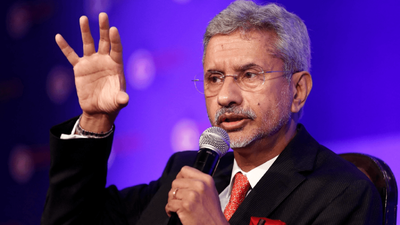
Imagine a world where the choices parents make about their children’s education are no longer limited to their local public schools—but instead are filtered through federal tax codes, charitable donations, and state opt-ins. That world is now a reality. With the passage of “One Big Beautiful Bill,” the Trump administration has imposed a sweeping transformation on America’s education and social support systems, blending ambition with controversy and opportunity with new constraints.For families, educators, and policymakers, the legislation reads like a labyrinth of promises and caveats. It simultaneously opens doors to private schooling, reshapes federal student loans, and restructures social safety nets, yet each provision comes with strings that could unravel its intended benefits. The question is no longer whether these changes will touch American lives, they already do, but how deeply, and for whom.
K-12 school vouchers : The federal gamble
The centerpiece of the bill is a first-of-its-kind federal school voucher program. By tying tax incentives to charitable contributions to Scholarship Granting Organizations, the program allows families to use vouchers for tuition, books, and even homeschooling costs. Unlike earlier voucher schemes, eligibility is no longer restricted to low-income households—any family earning up to 300% of the median income in their area can apply.Yet the program’s impact will hinge on state participation. Blue states with limited political appetite may sit it out, while conservative states, despite ideological alignment, have recently rejected similar measures at the ballot box. The Joint Committee on Taxation warns that lost federal revenue could reach $26 billion over a decade, leaving the bill’s financial and educational promise precariously balanced.
Medicaid and the hidden cost for schools
Beyond classrooms, the legislation introduces sweeping changes to Medicaid, including more frequent eligibility checks and a nationwide work requirement for parents, though children under 13 are exempt. Analysts predict that nearly 12 million people could lose coverage, with profound implications for schools that rely on Medicaid funding.For districts, Medicaid underwrites a vast network of school health services—from nurses to therapists, counselors, and special education staff. According to surveys by the School Superintendents Association, 80% of school leaders anticipate layoffs of health staff if funding declines, and more than half foresee reductions in student services. These cuts threaten not only health but learning outcomes, creating a hidden crisis in schools across the nation.
SNAP and the nutrition safety net
The bill also reshapes the Supplemental Nutrition Assistance Program (SNAP), tightening exemptions from work requirements. Research shows that work mandates rarely improve earnings but often cut families off benefits, leaving children hungry. For millions of students, this is more than a loss of groceries, it is a direct threat to the free and reduced-cost meals provided at school, undermining both nutrition and learning readiness.
Child tax credit : A modest, unequal boost
The legislation slightly raises the Child Tax Credit from $2,000 to $2,200 per child, but eligibility remains limited to families meeting specific income thresholds and requiring valid Social Security numbers. Critics argue that, despite its visibility in policy debates, the expansion disproportionately benefits higher-income families while leaving many lower- and moderate-income households without meaningful support.
Federal student loans: A hard reset
Perhaps no provision is as far-reaching as the overhaul of federal student loans. Graduate students face caps far below current program limits, while repayment plans, including the Biden-era SAVE plan, are phased out. Lifetime borrowing limits are introduced for both undergraduates and graduates, forcing families to rethink not only college affordability but entire educational trajectories. The era of relatively unrestricted federal student borrowing appears to be ending, replaced by a tightly managed system that favors financial predictability over access.
Pell Grants and college accountability
Low-income students continue to rely on Pell Grants, but new accountability measures tie federal funding to post-graduation earnings, and colleges with significant endowments face higher taxes. While framed as an efficiency measure, this shift places added scrutiny on institutions that have historically served marginalized populations, raising questions about whether ambitious reform will ultimately widen existing inequities.
The crossroads of policy and opportunity
“One Big Beautiful Bill” is not merely legislation—it is a lens through which to view America’s evolving priorities. It challenges the traditional relationship between federal authority, state autonomy, and family choice. It tests the resilience of public schools, the accessibility of higher education, and the efficacy of social safety nets. The promise of expanded opportunity exists side by side with the risk of deepened inequity. In the coming decade, the nation will see whether this bold experiment succeeds—or whether it will leave millions of students and families navigating a landscape of constrained choice and rising uncertainty.






